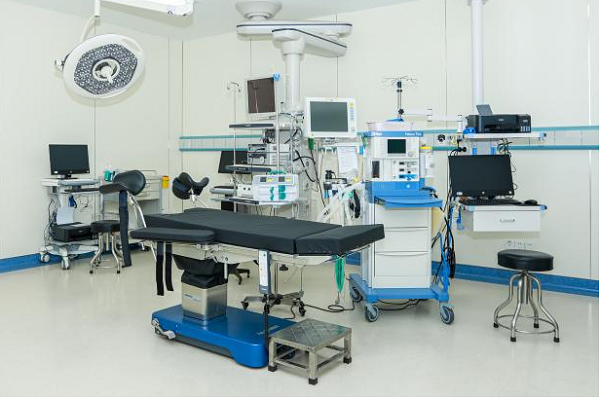Day surgery center put into service at CQHCWC

The operating rooms of the day surgery center at the CQHCWC are fully equipped. [Photo/CQHCWC]
To provide better services for patients, the Chongqing Health Center for Women and Children (Women and Children's Hospital of Chongqing Medical University), or CQHCWC, in Southwest China's Chongqing, put its day surgery center into service on Feb 1.
Preparations for the center lasted nearly half a year, ranging from procedure designs, policy support, and personnel training, to cooperation of teams regarding surgery, anesthesia, nursing, medical insurance, and information.
Day surgery refers to a new type of operation mode in which patients complete admission-related examinations, surgical anesthesia assessment, surgery, short postoperative observation and discharge within 24 hours.
Compared with the traditional mode, day surgery has the advantages of less medication, lower cost, shorter hospital stay, and faster recovery.
Located on the second floor of the Inpatient Department of the Ranjiaba Branch, the day surgery center provides one-stop medical services for patients. All surgeries will be completed by senior physicians or experts.
The center is committed to the concept of "minimally invasive, painless, precise, high-quality, and efficient", formulating various plans for patients in terms of pain management, liquid management, and nutrition management, among others.
Benefiting both patients and the hospital, the day surgery center handles surgeries covering various departments, including the Gynecology Department, the Pediatric Surgery Department, the Plastic and Cosmetic Surgery Department, and the Eyes, Ears, Nose and Throat (EENT) Department.
Diseases that can be treated at the day surgery center include:
1. Gynecological diseases
Non-laparoscopic types: benign vulvar mass, vaginal wall cyst, Bartholin's cyst, labia minora adhesions, vaginal mediastinum, and hymen atresia.
Hysteroscopic types : endometrial polyps, cervical canal polyps, missed abortion, submucosal uterine fibroids, intrauterine residue after abortion, hydatidiform mole, abnormal uterine bleeding, cesarean section scar site pregnancy type I, cesarean section incision diverticulum with abnormal bleeding, incomplete mediastinal uterus, mild/moderate intrauterine adhesions, and incarcerated, broken or residual intrauterine devices.
Laparoscopic types: infertility, unruptured ectopic pregnancy, hydrosalpinx, tubal ligation, ovarian cyst, uterine fibroids, adenomyosis, and cervical insufficiency.
2. Pediatric diseases
Circumcision, varicocele, cryptorchidism, hydrocele, indirect inguinal hernia, anal fistula, brow cyst, body surface mass resection, ureteral calculus, torticollis, polydactyly, popliteal cyst, ganglion cyst , stenosing tenosynovitis, trigger finger, umbilical sinus, foreign body in the trachea, etc.

 CQHCWC: Nurture healthier futures for children
CQHCWC: Nurture healthier futures for children How to help children develop healthy eating habits
How to help children develop healthy eating habits Wechat
Wechat Weibo
Weibo